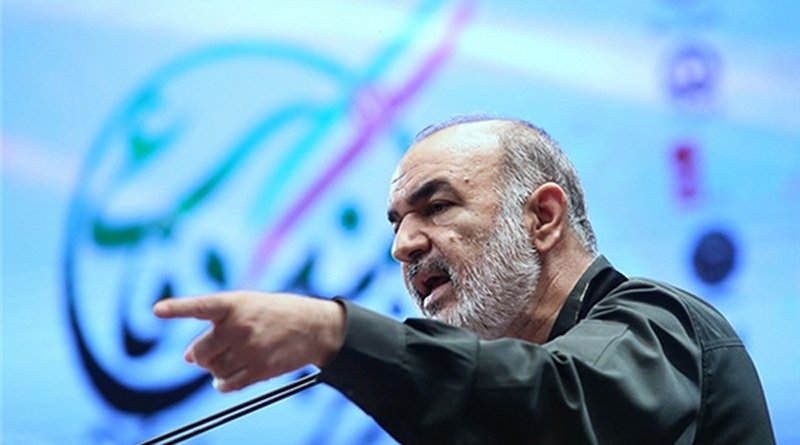Iran: Regime’s Fear Of Explosive Society – OpEd
Hossein Salami, commander-in-chief of Iran’s Revolutionary Guard Corps (IRGC), told the state television he had ordered his navy to destroy any US ‘terrorist’ forces in the Persian Gulf. “Americans have experienced our power in the past and must learn from it,” he emphasized.
In June 2016, the same Hossein Salami, when he was deputy commander of the IRGC, threatened to close the Strait of Hormuz, “if it happened to be a harmful passage and threat to us.”
“We’re really dangerous for the Americans if they want to be a threat to us, and we’re announcing it,” he said.
In October 2012, according to SPIEGEL ONLINE, the IRGC had intended to close the Strait of Hormuz by creating an accident for a tanker and polluting the Persian Gulf. The sabotage was supposed to be in response to Western sanctions.
But during the ensuing 8 years, the Persian Gulf saw nothing but the roar of the waves, and, even with the death of Qassem Soleimani, the Persian Gulf remained calm. However, Western observers are concerned about Iran’s satellite launch which could threaten the United States.
The IRGC claims the launch of the missile was to put a military satellite in orbit, using a missile that relies on North Korean technology and shows that Iran’s missile program is still evolving. But, together with these events, in order to examine the current situation in Iran more closely, another parameter should be added which is the events inside Iran.
Now, the Iranian regime’s inefficiency and incompetence in its approach to Coronavirus have put the Supreme Leader Ali Khamenei in a deadly deadlock. Launching a satellite and the recent activities of speedboats in the Persian Gulf seems to be his way of trying to escape the impasse.
An Iranian proverb says, “cowards sing in the graveyard, loudly and strongly”.”China’s quarantine model cannot be implemented in Iran,” Hassan Rouhani told a meeting of the Supreme National Security Council, adding that “if we close businesses and guilds, we will soon face 30 million hungry street protesters.” The regime’s policy is, although at the cost of killing more citizens, that Iran’s economic machine must start again as soon as possible.
For Rouhani, the economic machine is synonymous with the regime’s survival. The situation after the Coronavirus outbreak in Iran is so dire that Gholam-Ali Jafarzadeh, Rasht’s representative in the Iranian parliament, has described it as “terrible” by referring to the unemployment rate and inflation. Of course, the global response to the Coronavirus outbreak has meant that the issue of unemployment has become a problem around the world. But for Iran, it has become a crisis of overthrow.
According to government spokesmen Ali Rabiee, who had been minister of co-operation, labor, and social welfare for some time, nearly 3 million formal and 4 million contractual employees face pay cuts or layoffs and there is no unemployment insurance plan.
Therefore, there is a great possibility of unrest in the suburbs, especially in the communities that face about 20 percent more unemployment and where the recession has also deepened since November 2019 protests, in which the regime killed 1,500 young people in 192 cities. This social condition is alarming and could quickly turn into an uprising. An uprising which anything could kickstart and would very likely not be possible to predict in advance.
In such a situation Ali Khamenei needs to sing loudly and strongly and the IRGC provides him with a missile launch in national conditions where starving people in poverty is on the verge of revolt. Time will tell just how effective their schemes for survival prove to be.

